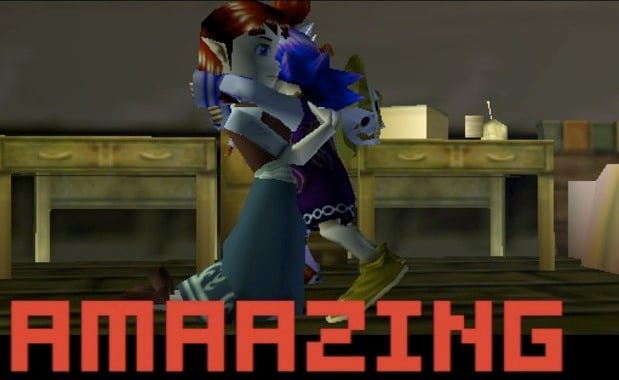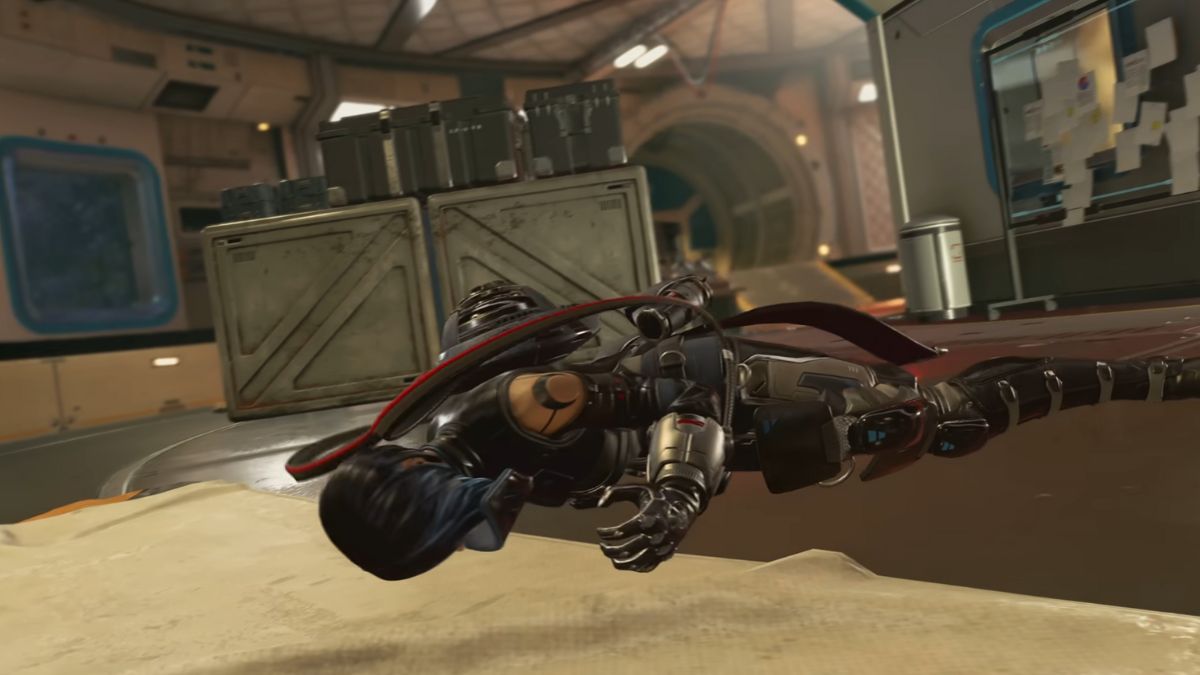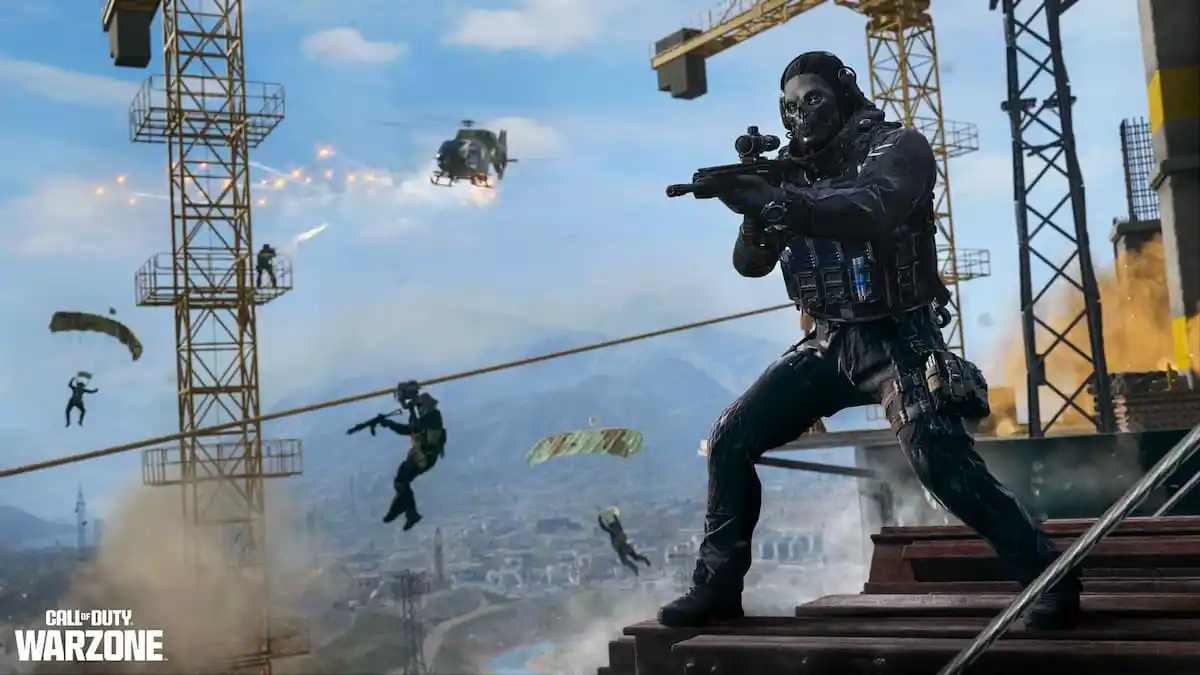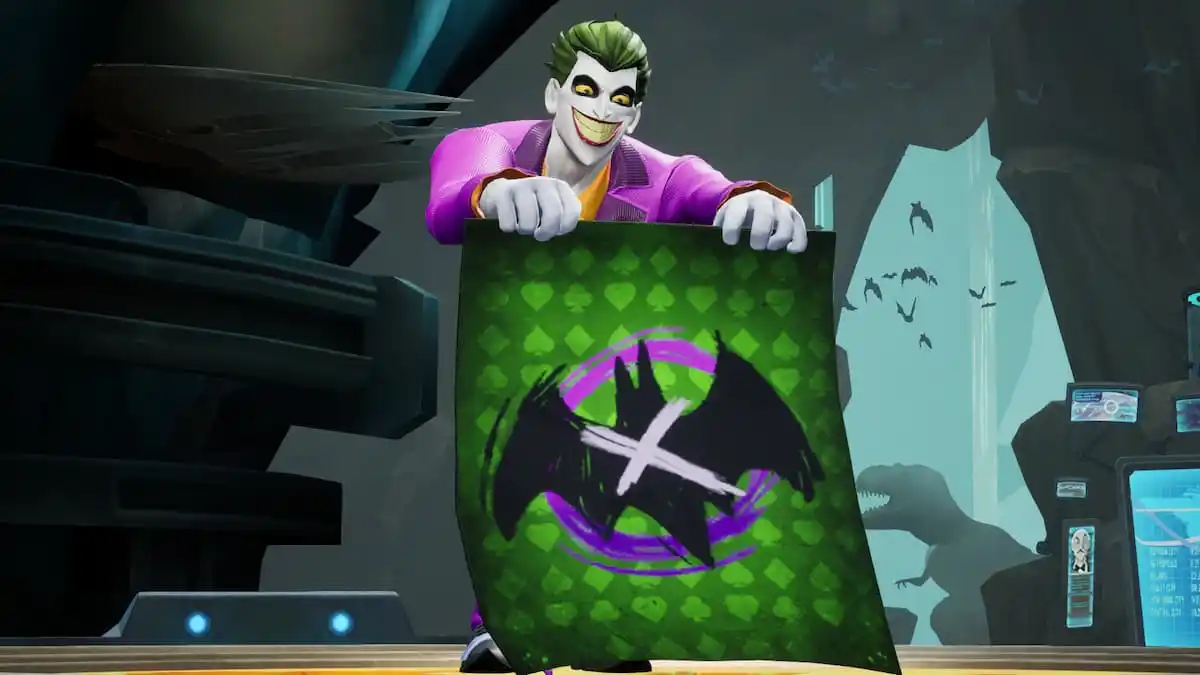[For his Monthly Musing, idle eros shares how a specific scene in Majora’s Mask affected him. Want to see your own blog on the front page? Go ahead and write a blog on this month’s topic and it might get promoted! — JRo]
I have been playing games for over 20 years. Since I was about 12, I believed that video games had the greatest potential of any art form, with the notable exception of music. I reasoned that there are several dimensions to media beginning with raw information, and then adding structure to it with visual form. Architecture, sculpture, and paintings exemplify this. Next, we move to films and plays where we add an auditory component. Finally, when we include interactivity we get video games; the potential, I think, of adding this last piece seems nearly limitless to me. It is an entirely new way to tell stories. Trying to find just one moment in all my years of gaming that represents this philosophy, is beyond challenging, but when I looked over this month’s topic, I kept coming back to a specific scene from Majora’s Mask, informed by an experience with Half-Life 2 and galvanized by Roger Ebert’s infamous criticism of gaming.
For those that have not played this decade-old gem, Majora’s Mask begins shortly after the end of Ocarina of Time. Link is travelling in search of a missing friend, when Skull Kid steals Epona, Link’s horse. This spurs a chase that leads Link to Termina, the setting of Majora’s Mask. When he arrives, he has been transformed into a Deku Scrub and placed in a terrorized land. You soon discover that Skull Kid stole the Majora’s Mask, an ancient object of terrible power, and has been using it for his own amusement. The “Happy” Mask Salesman tries to impress upon Link the importance of tracking down the mischievous child quickly, because in 72 hours, the Carnival of Time will begin, the salesman will have to leave, and the Moon will strike the very heart of Termina, killing everyone.

Majora’s Mask occupies an interesting place in the hearts and minds of gamers, and Legend of Zelda fans especially. Its structure is, to put it mildly, a bit odd. The “three days” mechanic dramatically reduces player freedom, and there are fewer dungeons than in any other game in the series. Instead, the focus is on side quests and tertiary characters. This shift in tone and form was certainly jarring, but those who stuck it out were rewarded with one of the most beautifully constructed and tragic and dædal games yet made.
With the Moon falling, players are imbued with a sense of urgency. Most of the characters in Termina are acutely aware of their impending doom, but they exhibit a wide range of reactions to his ghastly, ever-present visage; some are dismissive, some treat it as a “sign of the times”, others are puzzled, but most are rightfully panicked. This scenario invites such a curious range of NPC interactions, that no two encounters feel alike, and as you are dropped into the new world you are encouraged to explore the people more than the environments. The Bomber’s Notebook is the most explicit of these gentle nudges, allowing you to track the activities of many citizens of Termina and help solve their rapidly growing problems. There’s so much to do, in fact that you will have to use the Song of Time to reset the counter many times before the game is done.
One of the people Skull Kid harassed is a man named Kafei. Skull Kid has turned him into a child; one who is to be married in a few days to Anju. Kafei, ashamed of his current appearance goes into hiding. Through a complex series of quests spanning all three days, on the last night, in a private room, almost an hour before the Moon is set to extinguish all life in Termina, the two are reunited. They hold one another tight as the earth trembles and the apocalypse draws nearer. And then…
“We shall greet the morning… together.”
When I read that, I cried. There is something so pure about that line. It is not the Agapic love of a martyr. In spite of their physical incongruence, their love is completely mutual and elegantly expressed in a scene I often call “Lover’s Reunion”.
Roger Ebert is famous for his skepticism of games being treated as “high art”. Growing up with them in the way I did, when I read his musings, I can almost immediately conjure dozens of examples that can counter each and every point he makes. For some time, the moment described above has stood out as my favorite. As I mature though, the significance of the “Lover’s Reunion” has developed as well. When I reflect upon what makes interactive media unique, and where they are strongest, I settle on stories that necessitate interference. By this, I mean to say that what sets interactive media apart is interactivity, such that any story that can be told just as well or better in another media, or any story which does not actively benefit from the interactive component is not a particularly good “game”.

This perception of what games should be was tempered by playing Half-Life 2, listening to the developer commentary and reflecting upon the key points. For those that have only finished the game, I think you really need to get your ass on the commentary. For those that have done neither, I highly recommend both. The Half-Life series is a staple in any discussion of games as art, and for good reason. There are so many great moments that I could not choose just one, ultimately settling on the more straight-forward, albeit less accessible, Majora’s Mask.
When making my way through City 17 (with commentary), I began to slowly realize just how much work goes into a game. You will frequently hear phrases like “the illusion of freedom”, “extensive playtesting”, and “player confusion”. These all bring up a lot of discussion questions. For one, detractors from interactive media as high art often argue that the nature of interaction makes much of the work of game developers pointless; that because a player can choose to experience a scene in a different way, or to skip it entirely, the work as a whole is invalid. I find this assertion as superficial as it is asinine, and I imagine a lot of you probably feel the same way. What I am arrogant enough to assume they do not understand is that gaming is not really about player freedom as much as it is with player intervention. The purpose of gaming, when we restrict the discussion to those titles considered for genuine artistic merit is the necessity of incorporating actions by the player into the story in a meaningful way. Majora’s Mask is remarkable because without your direct intervention, you can watch the people of Termina’s lives steadily decay. If you save them however, you are briefly rewarded before you must reset the clock such that you can marvel at the futility of your efforts. It is such a paradoxical mechanism that allows you to, on the one hand experience the joy of helping others and then punish you by showing you how little it matters. Knowing all of this, Ebert’s characterization of games as “choose-your-own-adventure books”, comes off as hilariously misinformed at best and willfully ignorant at worst.

This may seem like yet another fiery-eyed rant about the apparent foolishness of non-gamers, but ultimately my goal is to use Ebert to establish the uniqueness of the “Lover’s Reunion”. To some degree I feel that he is right. While there are many games that exemplify the concept of good design and understand the value of a crafted journey, many do not. As a whole, video game writing is not the best out there, the plots are often hackneyed, the characters are bland and uninteresting, and every now and then a developer comes along who royally screws up some of the most basic tenants of game and level design. “Lover’s Reunion” stands both metaphorically and literally as a symbol of light and serenity in the landscape of hopelessness that typifies the game, and it is made all the richer when one understands the lengths a good developer will go to lay out all of the pieces and artfully assemble them.
I replayed Majora’s Mask this past summer. This time, I had, I think a better appreciation for the work it takes to make an emotionally relevant game. As I played I slowly began to realize just how much of the game is built around “Lover’s Reunion”. The quest lines are connected with those of many other characters, including the Bombers, a traveling Goron, the Mayor and his wife, the postman, and a shopkeeper, just to name a few. Indeed, it could be said that most of the game is built around this one scene. The degree to which everything in the world is connected, and how so many things come back to this quest line is remarkable. The rewards are tangible, and I never cease to feel like a more cultured person for having experienced the romance of Kafei and Anju.
Majora’s Mask is my favorite game of the Legend of Zelda series and easily in my top five. I am used to this opinion being controversial, but I think my reasoning is solid. Unlike most Zelda games, the focus is on the people of Termina. The Moon’s goofy yet haunting face watching you for the length of the game serves as a constant reminder of your overarching purpose, but almost no real progress can be made towards stopping him until the very end. The chaos stirred up by the pint-sized brat, Skull Kid, provides countless touching moments. Everything, while apparently scattered and disorganized, really only points towards one goal, curtly expressed by the second song you learn in the game- the Song of Healing. Majora’s Mask is about reuniting, soothing, making the lives of people easier, and rewarding you with the emergent stories of the people. In this sense, I can think of few games where player interaction is more important, and I can think of no single event that affected me more than seeing Kafei and Anju waiting.
“We shall greet the morning… together.”




